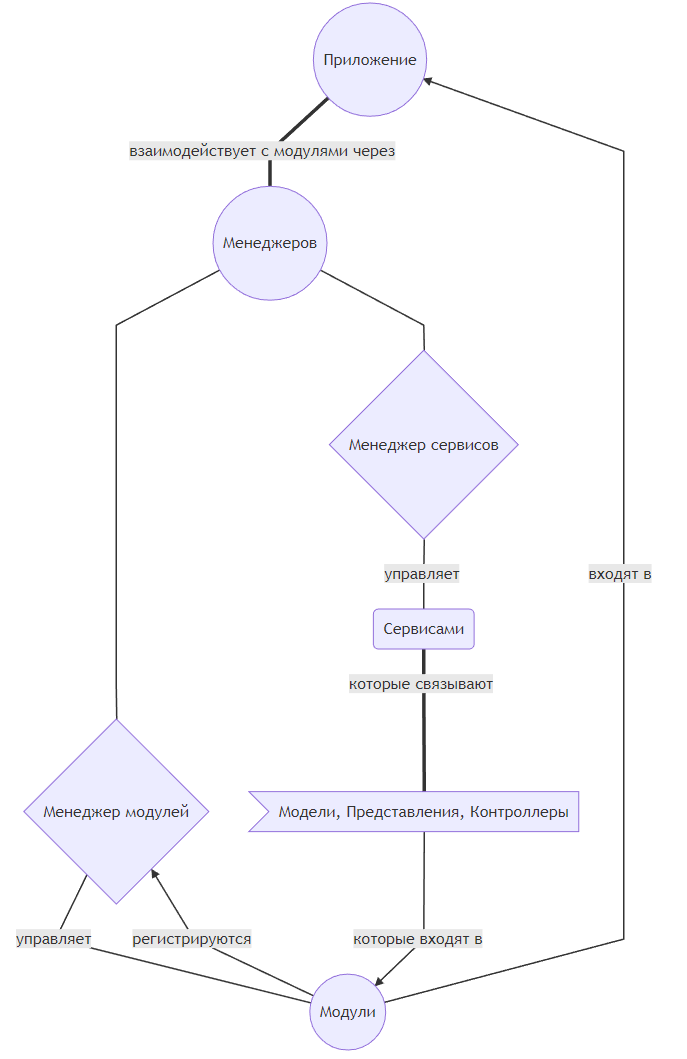A brief tour of the highlights of the Zend Framework
Is it just a framework, or does this framework epitomize the pride of the PHP community — its hard-working developers, the key ingredient, so to speak? With a lot of configs ... The object of love of our PL, with a good MVC, so that Zend Framework is the best PHP framework.
Here you will not find the answer to this question, but you will learn about the ServiceManager and ModuleManager.

A warning
- This material is based on what I was looking for on the Zend Framework 2, in some places even mentions in version 1 appear. *. I do not think that this will become a problem when compared with other versions, since fundamental points are considered and they are unlikely to change globally.
- In the arguments and translations (as well as in paragraph 1) there may be blunders, both mine and original sources. All will be given links, and their own creativity will be with a note [mine] .
- Focused on those who googled and, like me, confused. There will be no deployment of blogs, explanations and interactive. But there will be two pictures and a kitty.
Content
- Terms
- Framework device
- General structure and communication
- Plugins
- Visualization
- Connections
- Schematic representation
- From the author
- useful links
- Bonus
Terms
Source , a little [mine] .
- Application - the final product site;
- Module - a functionally complete "block" of an application, whose code may consist of models, views, controllers. The module extends the functionality of a web application and can function only "inside" it; Modules are registered in
application.config.phpin themodulessection. - ModuleManager - a container for manipulating modules;
- Service - "mechanism" in the module, for manipulations between models, controllers, types, etc.; Services are registered in
module.config.phpin theservice_managersection. - ServiceManager is a container for service manipulations.
- ControllerManager - works with services and factories for loading controllers (
\Zend\ServiceManager\AbstractFactoryInterfaceor\Zend\ServiceManager\ServiceManager). dock - EventManager is a component that aggregates event handlers (Listener) for one or more named events (Event), and also initiates the processing of these events.
- A plugin is a class that in some way extends the functionality of all controllers.
Framework device
General structure and communication
When a Zend\Mvc\Application , a Zend\ServiceManager\ServiceManager object is created and configured via Zend\Mvc\Service\ServiceManagerConfig . ServiceManagerConfig gets the configuration from config/application.config.php (or some other application config that is passed to Application when it is created). Of all the services and factories represented in the Zend\Mvc\Service namespace, ServiceManagerConfig is responsible for only three: SharedEventManager , EventManager and ModuleManager .
After this, the Application retrieves the ModuleManager . At this point, the ModuleManager through the ServiceManager configures the services and factories provided in Zend\Mvc\Service\ServiceListenerFactory . This approach makes it possible to simplify the configuration of the main application as much as possible and to allow the developer to configure various parts of the MVC system from modules, overriding any default configuration in the services of these MVCs.
ModuleManager , expressed in Zend\Mvc\Service\ModuleManagerFactory . This is probably the most complex factory in the MVC stack. ModuleManager expects the ApplicationConfig service to be implemented ( Di ) with the module_listener_options and modules keys.
It creates an instance of Zend\ModuleManager\Listener\DefaultListenerAggregate using the extracted module_listener_options . It then checks if a service exists with the name ServiceListener ; if not, it uses a factory named Zend\Mvc\Service\ServiceListenerFactory . A number of listener services will be added to the ServiceListener , such as listeners of the getServiceConfig , getControllerConfig , getControllerPluginConfig , getViewHelperConfig module getViewHelperConfig .
The ModuleManager then retrieves the ModuleManager service and attaches the above listeners. It creates an instance of Zend\ModuleManager\ModuleEvent , by setting the "ServiceManager" parameter to the service manager object. Finally, it creates an instance of Zend\ModuleManager\ModuleManager and implements the EventManager and ModuleEvent .
[my] The case when the code is clearer:
<?php namespace Zend\Mvc\Service; use Zend\ModuleManager\Listener\DefaultListenerAggregate; use Zend\ModuleManager\Listener\ListenerOptions; use Zend\ModuleManager\ModuleEvent; use Zend\ModuleManager\ModuleManager; use Zend\ServiceManager\FactoryInterface; use Zend\ServiceManager\ServiceLocatorInterface; class ModuleManagerFactory implements FactoryInterface { public function createService(ServiceLocatorInterface $serviceLocator) { if (!$serviceLocator->has('ServiceListener')) { $serviceLocator->setFactory('ServiceListener', 'Zend\Mvc\Service\ServiceListenerFactory'); } $configuration = $serviceLocator->get('ApplicationConfig'); $listenerOptions = new ListenerOptions($configuration['module_listener_options']); $defaultListeners = new DefaultListenerAggregate($listenerOptions); $serviceListener = $serviceLocator->get('ServiceListener'); $serviceListener->addServiceManager( $serviceLocator, 'service_manager', 'Zend\ModuleManager\Feature\ServiceProviderInterface', 'getServiceConfig' ); // $events = $serviceLocator->get('EventManager'); $events->attach($defaultListeners); $events->attach($serviceListener); $moduleEvent = new ModuleEvent; $moduleEvent->setParam('ServiceManager', $serviceLocator); $moduleManager = new ModuleManager($configuration['modules'], $events); $moduleManager->setEvent($moduleEvent); return $moduleManager; } } Plugins
The controller architecture includes a plugin system that allows you to add your own code, which will be called when certain events occur during the life of the controller. The front controller uses the plugin broker as a registry of user plug-ins, the plug-in broker also provides a call for event methods in each plugin registered through the front controller.
Event methods are defined in the abstract class Zend_Controller_Plugin_Abstract from which all user plugins should inherit
Visualization
[my]
- Reads from top to bottom, unless otherwise specified by arrows.
- Lines with arrows indicate what is included.
- Thin lines without arrows indicate what is connected with what.
- Thick lines without arrows indicate what controls.
Connections

Scheme

From the author
The attentive reader noted that the article begins with a link to the Toaster, where a question is asked about the differences between ServiceManager and ModuleManager, and the text of the article begins with them. Coincidence? I do not think. The fact is that Habr became the first place where I started to get acquainted with the basics of the framework and confusion was introduced by the publication where the blog was recreated from the documentation with comments from the author of the article. It was the absence of the description of the ModuleManager that pushed me to the wrong reasoning (that modules are registered in the ServiceManager) and this led to the writing of this article.
useful links
I do not want to engage in copy-paste and grow 6 parts per subject, so I attach a list of my bookmarks on ZF with notes:
Blog
In three articles c Habra
- https://habr.com/post/192522/
- Free translation of simple blog development documentation on ZendSkeletonApplication. It tells about configs, ServiceManager (or ModuleManager, I did not understand) and the connection of third-party libraries.
Original blog documentation
Eventmanager
Primary review
- https://habr.com/post/131077/
- A quick review of the new (at the time of publication) tool.
Detailed analysis
- http://zf2.com.ua/doc/50
- Documentation from the Ukrainian community on ZF.
ServiceManager
Quick start
- http://zf2.com.ua/doc/64 , http://zf2.com.ua/doc/103
- Documentation from the Ukrainian community on ZF.
Detailed analysis
- https://habr.com/post/241471/
- Invokable, factories and other weird stuff.
ModuleManager
Documentation
- http://zf2.com.ua/doc/98
- Documentation from the Ukrainian community on ZF.
I hope the brief excursion didn’t take too long and was useful. Of course, edits, suggestions, criticisms and other actions permitted by the Habr rules and the current legislation of the Russian Federation are accepted on your part.
The bonus we deserve:
Kitty
(= ^ ・ Ω ・ ^ =)
')
Source: https://habr.com/ru/post/426303/
All Articles